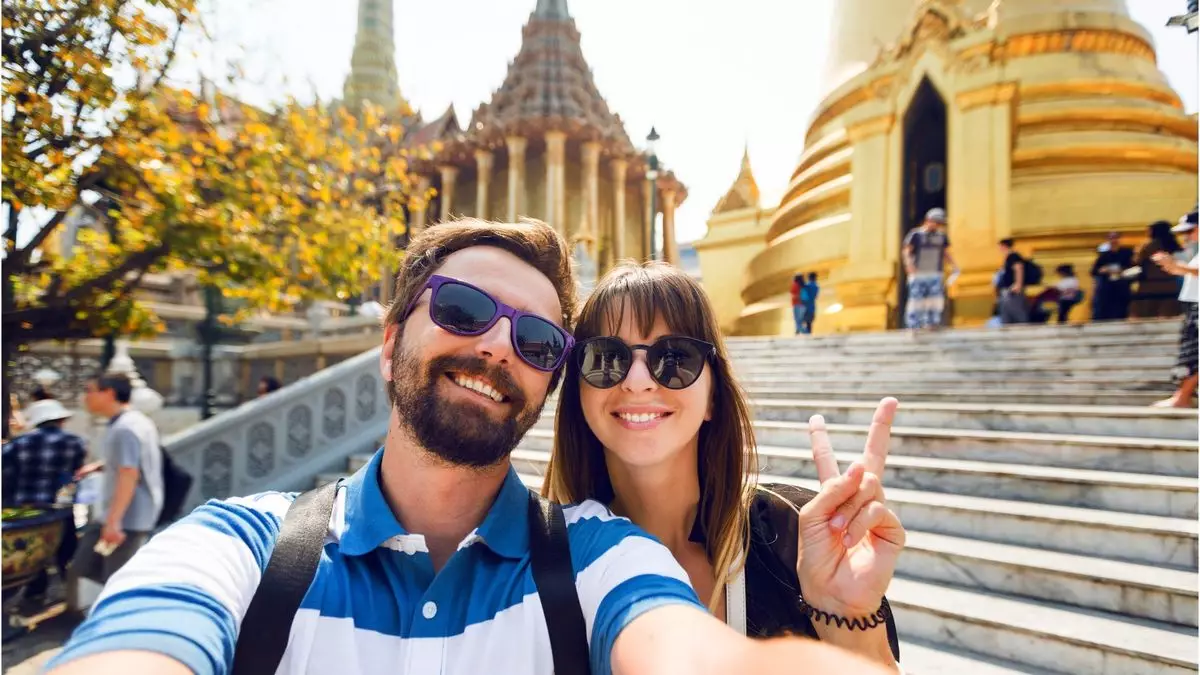Angkor Wat, renowned for its magnificent architecture and rich historical significance, remains one of Cambodia’s most cherished landmarks. This sprawling 12th-century temple complex has long attracted travelers from around the world, drawn not only by its architectural splendor but also by its profound cultural heritage. As a UNESCO World Heritage Site, Angkor Wat symbolizes Cambodia’s national pride and historical identity. Despite its allure, the recent pandemic has dramatically reshaped visitor patterns, impacting the dynamics of tourism in and around the site.
While Angkor Wat typically sees throngs of tourists, the ongoing recovery from the pandemic has created a unique environment in which visitors can experience the site with fewer crowds. Before the pandemic, foot traffic was largely dominated by Asian tourists, particularly from China, Japan, and Korea. However, according to industry reports, ticket sales for Angkor Wat are currently only at 45% of pre-pandemic numbers, a statistic that highlights the significant absence of Chinese tour groups. The travel recovery in Asia has been uneven; some countries have been slow to reopen, while others face economic challenges that hinder outbound travel.
Tourism industry insiders indicate that the pre-pandemic landscape, in which China led the charge in outbound travel, is slowly shifting. Companies like DidaTravel have reported substantial increases in booking activity to destinations within Asia, especially Japan. This reflects a growing trend of regional travel as the long-awaited return of Asian tourists unfolds, albeit at a slow pace.
As countries begin to reopen and travel restrictions ease, shifting travel preferences are becoming evident. Travelers from countries like Japan and Korea are gradually returning to the international scene, although their patterns remain influenced by challenges such as currency fluctuations and economic uncertainty. The Japanese yen, for instance, has seen a historical decline, making international travel more financially burdensome for Japanese citizens.
Furthermore, while Chinese travelers are resuming international trips, they are often choosing closer destinations that provide their own cultural experiences without the costs associated with long-haul flights. This shift towards local travel underscores a broader trend within Asia: travelers are prioritizing familiarity and comfort over global exploration.
Industry experts note that domestic tourism is currently dominating in several Asian markets, with many individuals choosing to travel within their own countries instead of venturing abroad. This emphasis on local exploration speaks to broader economic recovery struggles, as many communities continue to navigate the post-pandemic landscape.
Despite the temporary downturn in visitor numbers to Angkor Wat, Southeast Asia as a whole is experiencing a resurgence in tourism. Countries like Vietnam and Thailand are seeing a remarkable uptick in bookings from English-speaking markets. According to reports, travel bookings to these Southeast Asian destinations increased by approximately 41% from the previous year, showcasing a robust recovery amidst unprecedented challenges.
Companies that specialize in luxury travel, such as Remote Lands, report that while visitors are flocking to iconic destinations like Japan, they are also looking toward Cambodia, Laos, and Indonesia. However, rising operational costs in the luxury sector mean that travelers should prepare for higher prices, especially concerning accommodations and premium services.
There is a noticeable evolution in traveler preferences as the industry adapts to post-pandemic realities. Many travelers have shifted from the previous tendency of booking a single destination to opting for multi-destination itineraries. Tour providers are now reporting increased interest in packages that combine stays in countries like Vietnam, Cambodia, and Thailand, encouraging a more enriched travel experience that leverages the regional proximity of these destinations.
This trend is further propelled by the growing popularity of unique experiences, such as river cruises along the Mekong, which merge cultural immersion with breathtaking scenery. Companies like AmaWaterways are witnessing strong demand for their Southeast Asia cruises, compelling them to expand their fleet to accommodate growing preferences for leisurely river travel.
As the world learns to navigate life post-COVID-19, the travel landscape—especially in regions like Southeast Asia—continues to transform. Angkor Wat, while facing immediate challenges, represents the resilience of cultural tourism and the ever-evolving preferences of travelers. With emerging trends favoring multi-destination travel and a gradual resurgence of regional tourism, the future seems hopeful for both local economies and international travelers eagerly anticipating their next adventure.


Leave a Reply